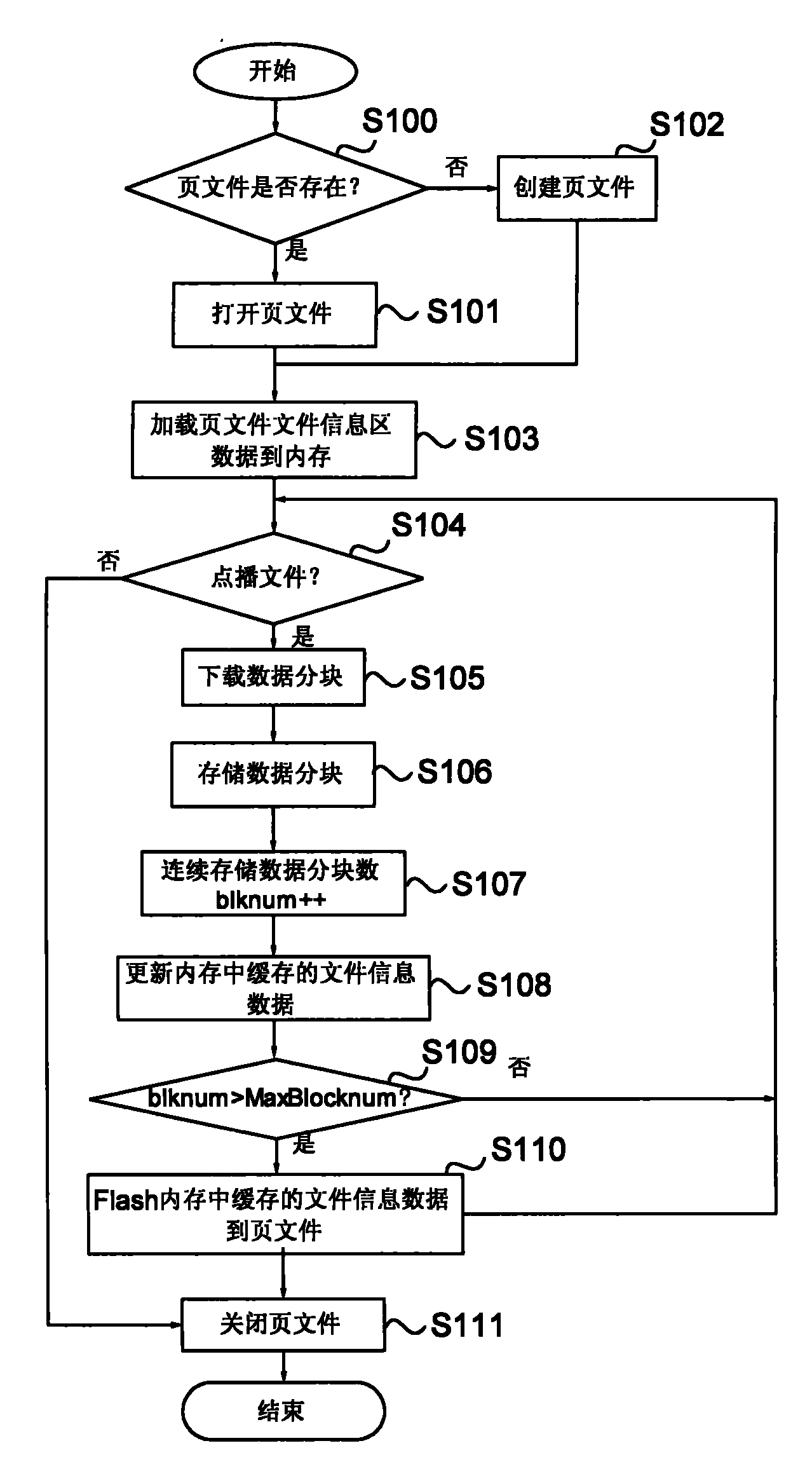Data storage method and device for flash memory
A data storage device and data storage technology, applied in the data storage field of memory, can solve the problems of no longer guaranteeing the correctness of stored data, physical storage units do not support random write operations, and management of files is complicated, etc., and achieves efficient, stable and smooth P2P The effect of on-demand services, reliable local data storage
- Summary
- Abstract
- Description
- Claims
- Application Information
AI Technical Summary
Problems solved by technology
Method used
Image
Examples
Embodiment Construction
[0036] The present invention will be further described below in conjunction with the accompanying drawings and embodiments.
[0037] Embodiment of data storage method of flash memory
[0038] figure 1 The flow of an embodiment of the data storage method for flash memory of the present invention is shown. See figure 1 , the following is a detailed description of each step of the flash memory data storage method of this embodiment.
[0039] Step S100: Check whether the paging file exists. If it exists, go to step S101, if not, go to step S102.
[0040] Step S101: Open the page file and go to step S103.
[0041] Step S102: create a page file, go to step S103.
[0042] The page file is a special data storage method, which is used to store and manage the media data of all on-demand files. The file structure of the page file is divided into a file information area and a data storage area. The structure diagram of the page file is as follows: figure 2 shown.
[0043] The f...
PUM
 Login to View More
Login to View More Abstract
Description
Claims
Application Information
 Login to View More
Login to View More - R&D
- Intellectual Property
- Life Sciences
- Materials
- Tech Scout
- Unparalleled Data Quality
- Higher Quality Content
- 60% Fewer Hallucinations
Browse by: Latest US Patents, China's latest patents, Technical Efficacy Thesaurus, Application Domain, Technology Topic, Popular Technical Reports.
© 2025 PatSnap. All rights reserved.Legal|Privacy policy|Modern Slavery Act Transparency Statement|Sitemap|About US| Contact US: help@patsnap.com



